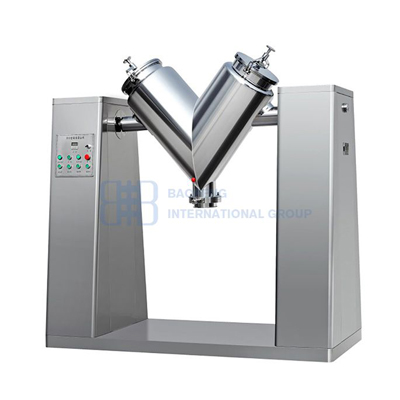Whether a beginner or seasoned professional, choosing a mixer from the extensive options available can be confusing and overwhelming. The bin blender supplier poses some questions to consider during the blender selection process.
The most important decision to make before making a choice is whether to produce in batch or continuous production. Will the process require periodic recipe changes, or will the same product be produced every day? If no changes will be made, it makes sense to consider continuous processing using large stationary mixers connected to both upstream and downstream processes. However, many manufacturers are finding that consumer demand for more variety is leading to adding more formulations to an ever-expanding product portfolio. The result is more formulation changes than ever before. This leads to the need to scrutinize how blending will be done. In this case, batch processing is the only way to go.

Bin Blender
When selecting a blender for powder mixing plants, consider the following points, which refer mainly to the case for batch processing given this is an expanding area of consideration.
Free-flowing powders with similar composition particle size will be easy to mix. Milder mixing methods are effective here, such as roller mixing or ribbon mixing.
On the other hand, in order to make a vicious, sticky powder uniformly mixed, it is necessary to exert an effect on the material, forcing the particles to fold and bind together. In this case, a bin blender that provides high shear in the form of a knife or enhancer is required. Applying the right amount of shear is critical to intermeshing and mixing the particles, however, if not managed properly, particle degradation and heat buildup can occur.
Big is not necessarily better for blenders. The blender might be large enough to match the order amount and batch size, but pay attention to loading times. Consider how long it will take to fill by ripping and tipping 25-kilogram sacks of ingredients. Then think about how long it will take to empty the product to packing. During this time the mixer will stand idle and be unproductive, which is not efficient. Companies often do not realize the cost of this lost time in filling and emptying the mixer, but it should be considered for the waste that it represents.
Also, consider if there are different batch size demands. Do customers always want the same size orders? Will there be a need to make small-sized batches of half or a quarter of the large batches?
Do not be fooled by claims of only a four-minute blend time. It is important to weigh up the full end-to-end process stage of blending, from filling the mixer to emptying it and getting it ready to go back into operation. It may only take four minutes to blend, but it could take two hours to load and three hours for packing to call off – for a total blending time of five hours and four minutes.
In-bin/IBC blending might take a little longer for the blend cycle (often 10 to 15 minutes), but can save time as formulation of the recipe is done offline and the container is removed immediately from the blender and taken off to packing. The filling, mixing, and packing process steps take place simultaneously. The blender itself does not need cleaning so it is free to go back into service immediately. The only limiting factor is how quickly operators can install and remove the bins from the blender.
If you want to get more information about the Bin Blender for sale, welcome to contact us.
Copyright © ZHUCHENG BAOZHIFENG MACHINERY CO., LTD. All Rights Reserved |
Sitemap
|
Powered by 